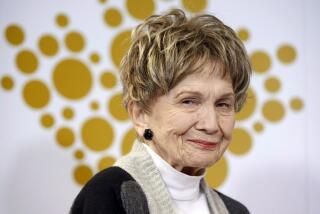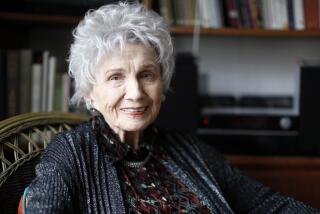Partnerships
I want to start with the title. The “two lives” referred to are those of Gertrude Stein and Alice B. Toklas, and the author presumes a kind of familiarity, using only their first names. Neither Stein nor Toklas would have welcomed this. In a tip of the cap to Stein’s title “Three Lives,” the absent third person here is the author herself. The second word in the opening of “Two Lives” is the first-person pronoun, and “I” figures largely throughout. Janet Malcolm, more than most other biographers, wrestles with the questions of what we can know and how we know anything, making that process visible in and as the text’s result. Several pages of this volume are devoted to a meeting she didn’t have with one of Stein’s biographers; others deal with her efforts to follow the recipes in “The Alice B. Toklas Cookbook” or to finish reading Stein’s lengthy and hard-to-parse “The Making of Americans.” That the first word of this review is “I” -- uncharacteristic of this writer -- should suggest how infectiously personal and colloquial is Malcolm’s wrangle with her subject. But biography it ain’t.
Nor, to be fair, do the couple require yet another full-dress rehearsal of their association. Readers know what they did where and when. Thirty years ago, Linda Simon produced “The Biography of Alice B. Toklas,” and “The Autobiography of Alice B. Toklas” -- Stein’s charmingly accessible self-portrait as “genius” -- was composed 45 years earlier, in 1932. Books on and by Gertrude Stein -- whom Malcolm describes as an almost-obsessive autobiographer and self-promoter -- are legion. If not quite as thoroughly picked over as the bones of Bloomsbury, the women’s years at Rue de Fleurus and Bilignin (the large manor house they occupied during World War II) are well-documented ones. What matters to this particular inquiry is a set of questions: “How had the pair of elderly Jewish lesbians escaped the Nazis? Why had they stayed in France instead of returning to the safety of the United States? Why did Toklas omit any mention of her and Stein’s Jewishness (never mind lesbianism)?”
Some answers do emerge. We discover the not-so-savory truth about their anti-Semitic protector, French historian Bernard Fay, who intervened on their behalf with the Vichy government even while he sent hundreds of other Jews to their deaths. We read that Stein was charming, Toklas not, that Hemingway wanted to sleep with the former and that the latter spilled her food. We find out that Alice regularly had orgasms, whereas Gertrude failed to; we learn that one of Gertrude’s biographers, Ulla Dydo, had a dream in which she equated the word “may” with “May Bookstaver,” a woman with whom Stein once had an affair and of whom Toklas was implacably jealous. We understand that Malcolm is impatient with her subject’s prose style but admires its originality: “No school of Stein ever came into being. But every writer who lingers over Stein’s sentences is apt to feel a little stab of shame over the heedless predictability of his own.”
“Heedless predictability” was never a hallmark of Stein’s prose, though repetition structures it, and clarity comes last:
“I am thinking of attacking being not as an earthy kind of substance but as a pulpy not dust not dirt but a more mixed up substance, it can be slimy, gelatinous, gluey, white opaquy kind of thing and it can be white and vibrant and clear and heated and this is all not very clear to me.”
Of a character in “The Making of Americans,” Malcolm observes: “Julia Dehning disappears and only reappears three hundred pages later; other characters come and go; but the writer figure remains. The jolts and lurches of her engagement with writing are the book’s plot. The reader never really cares what happens to the characters, but becomes increasingly curious about what their author is up to.”
That this describes the author of “Two Lives” is equally the case. The shadow of the photographer falls athwart the portrait, and our curiosity is rewarded by a set of smart perceptions about how hard it is to see. On the shelf of memorabilia about this famous couple, Malcolm’s text will take its place: Gertrude and Alice, were they alive, could claim another acolyte, and one they need not scorn. At least that’s what I think.
More to Read
Sign up for our Book Club newsletter
Get the latest news, events and more from the Los Angeles Times Book Club, and help us get L.A. reading and talking.
You may occasionally receive promotional content from the Los Angeles Times.







